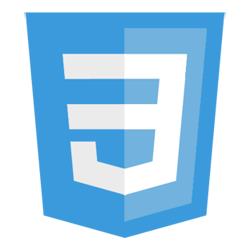CSS :target
One interesting CSS pseudo selector is :target. The target pseudo selector provides styling capabilities for an element whose ID matches the window location's hash. Let's have a quick look at how the CSS target pseudo selector works!
The HTML
Assume there are any number of HTML elements with a given ID:
<h2 id="section1">Section 1</h2> <h2 id="section2">Section 2</h2>
Take note of the ID values of the elements above -- to trigger the :target pseudo selector, the window.location.hash will need to match.
The CSS
The :target pseudo selector may be applied to classes, tags, or any other selector:
/* would apply to all targetted elements */
:target {
color: #000;
}
/* applies to H2's */
h2:target {
color: #f00;
}
When the window.location.hash is section2, the element color will become red and underlined. Simple! Much like you can animate elements upon hover or even between media queries, you could even animate the element when targeted; Chris Coyier provides an excellent example of target animating.
:target is neat but I haven't seen it abused to do anything groundbreaking. For a site that doesn't strive for ultimate dynamism, however, the :target pseudo selector could add a bit of native class when using window hashes.




Hi David,
I think one of the reason that make this technique hard to use in large websites could be the inability to create multi-level lists with this :
Example :
Four links in 2 categories
– #category1-link1
– #category1-link2
– #category2-link1
– #category2-link2
Category 1 <a href="..." rel="nofollow">Link1<a> <a href="..." rel="nofollow">Link1<a> Category 2 <a href="..." rel="nofollow">Link1<a> <a href="..." rel="nofollow">Link1<a>Then, this way you can style the 2nd-level links (
#categoryX-linkY), but how can you know how to style#category1andcategory2? You can’t. Because#category1:targetand#category2:targetnever happen.The only solution I see is parent selectors but it’s not even implemented in browsers yet.
First thing for :target use that comes to mind “tabs” nothing else…
SVG stacks use :target to great effect. Too bad they’re not more widely useful yet.
Another valid use I’ve come across is accordion widgets.
Not sure if I can think of a good use for this yet, but it’s great to read about it. I think the code:
h2:target {
color: #f00;
}
should be
h2:target {
background: #f00;
}
very good idea!
Even for dynamic pages.
http://jsfiddle.net/b3YEk/17/
The only problem right now is bad support in IE, which doesn’t remove or re-add the pseudo-class when you use back and forward navigation.
I was aware of :target, but this has prompted me to use it for a great use case: help docs.
Now I can just link people to the ID of a specific part of a help guide and it will automatically highlight the relevant passage.
Perfect.
@DrDeath, quite limited imagination. How about a FAQ Page that has all the questions first and the answers at the bottom? If there are many, using :target to highlight the answer for the question that you clicked would make it easy, since several answers would be shown on the screen at the same time.
@Gabriel Rodriguez, your imagination may well be a tad limited too. Instead of having all the answers displayed and highlighting the relevant ones, why not display just the relevant answer? (Mind you, I haven’t actually tested this theory of mine yet. But it seems like it should work, unless I’ve misunderstood how :target functions.)
@Gabriel Rodriguez i think accordion better for faq page
Using :not(:target) gives you even more flexibility, because you can also style the elements that are not :target, and even apply transitions to them :)
http://jsfiddle.net/SchizoDuckie/fzZ9d/
Sweet demo! Thanks for sharing.
Incidentally, not that it would be appropriate for that demo (because it definitely wouldn’t), did you know that
setTimeoutcan be used without a second parameter? In other words, it can be used just to set the execution order of functions. (Only recently did I discover that little tidbit.)When do you guys expect Internet Explorer will have full support for these kind of elements?
Probably somewhere between 2020 and 2030. And then you’ll still have to wait for adoption rate…
Hey SchizoDuckie, looks like you’re wrong! haha (after a long time) http://caniuse.com/#search=%3Atarget
internet explorer finally over, microsoft will implement your new browser, now, the things go more faster